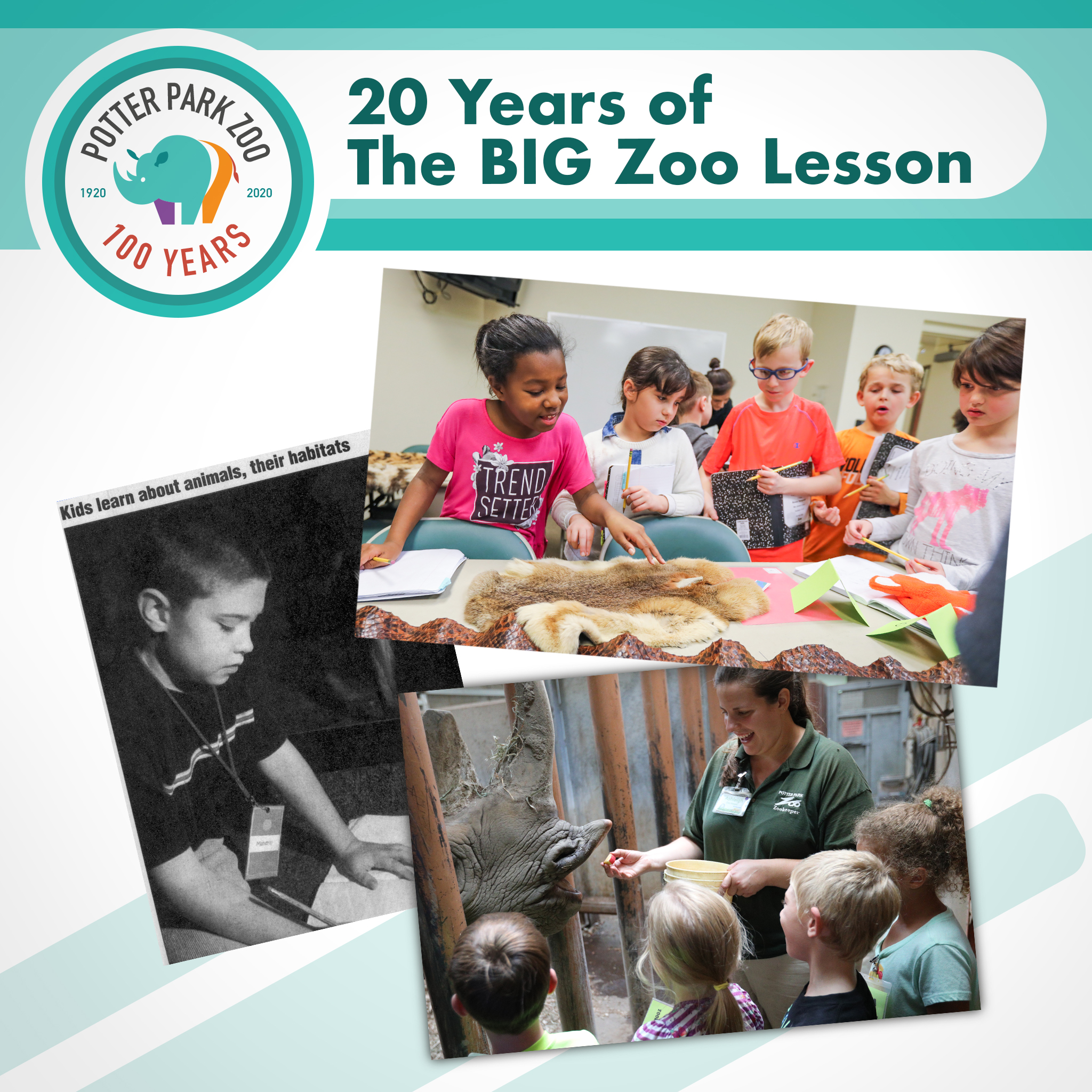
Since 2000, about 23,000 students from area schools have attended Potter Park Zoo’s award-winning BIG Zoo Lesson study trip for an amazing learning experience. That number of people would fill 1 1/2 Breslin Centers or almost one-third of Spartan Stadium. Hallmarks of the program include the zoo becoming the classroom every day for a week, and students observing animals, talking to experts, and studying animal artifacts up close. This is not a typical field trip, and it has made a huge impact on those who attend.
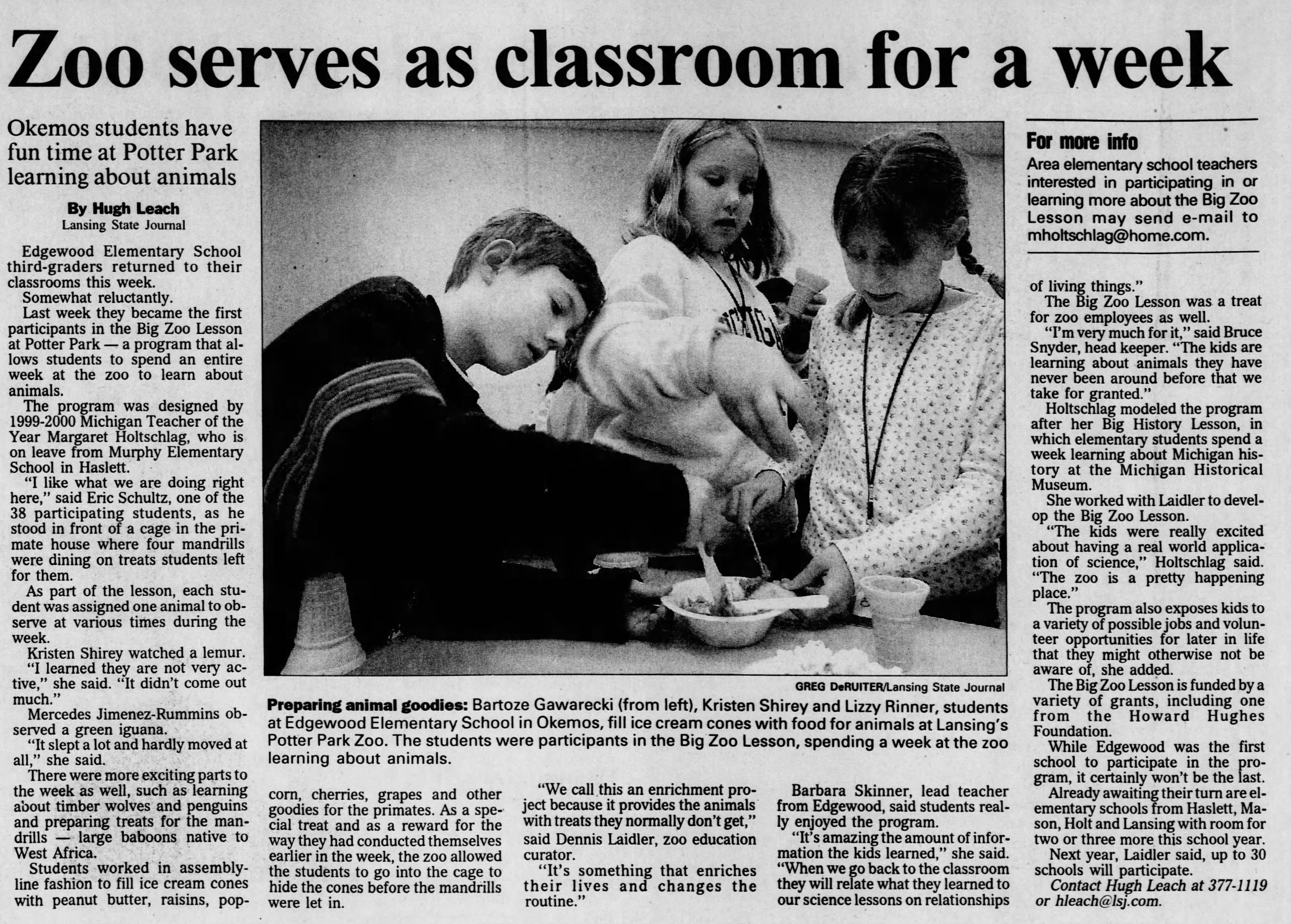 The Discovery Center at the zoo opened in 2000 with two classrooms and a large multipurpose room as well as offices and storage. The building brought new capabilities to expand educational opportunities. At the same time, local Haslett elementary teacher Margaret Holtschlag (1999-2000 Michigan Teacher of the Year), approached leadership at the zoo with an idea to expand her BIG Lesson programs to include Potter Park Zoo. Realizing that ordinary school trips did not allow enough time for the deep learning that was possible, Ms. Holtschlag designed a five-day study trip for second through eighth graders to immerse them in local institutions such as history museums, nature centers, and zoos, providing more authentic, hands-on learning experiences. A wonderful, productive collaboration resulted between Ms. Holtschlag, Dennis Laidler (zoo education curator), and zoo personnel that has brought 20 years and counting of BIG Zoo Lesson innovation, learning, and memories to area students, teachers, and parents. The Binder Park Zoo in Battle Creek and John Ball Zoo in Grand Rapids have also adopted the model.
The Discovery Center at the zoo opened in 2000 with two classrooms and a large multipurpose room as well as offices and storage. The building brought new capabilities to expand educational opportunities. At the same time, local Haslett elementary teacher Margaret Holtschlag (1999-2000 Michigan Teacher of the Year), approached leadership at the zoo with an idea to expand her BIG Lesson programs to include Potter Park Zoo. Realizing that ordinary school trips did not allow enough time for the deep learning that was possible, Ms. Holtschlag designed a five-day study trip for second through eighth graders to immerse them in local institutions such as history museums, nature centers, and zoos, providing more authentic, hands-on learning experiences. A wonderful, productive collaboration resulted between Ms. Holtschlag, Dennis Laidler (zoo education curator), and zoo personnel that has brought 20 years and counting of BIG Zoo Lesson innovation, learning, and memories to area students, teachers, and parents. The Binder Park Zoo in Battle Creek and John Ball Zoo in Grand Rapids have also adopted the model.
Key components of the program include teachers participating in professional development sessions, correlating core curriculum with real world learning, and then designing and leading their class’s week; students having extended periods for observation, writing, sketching, conversation, and cooperative research; and teachers, parents, and zoo staff and volunteers teaming as partners in the teaching and learning process. The week is a catalyst for a year-long thematic study with the learning beginning in school before classes arrive and continuing when they leave the zoo.
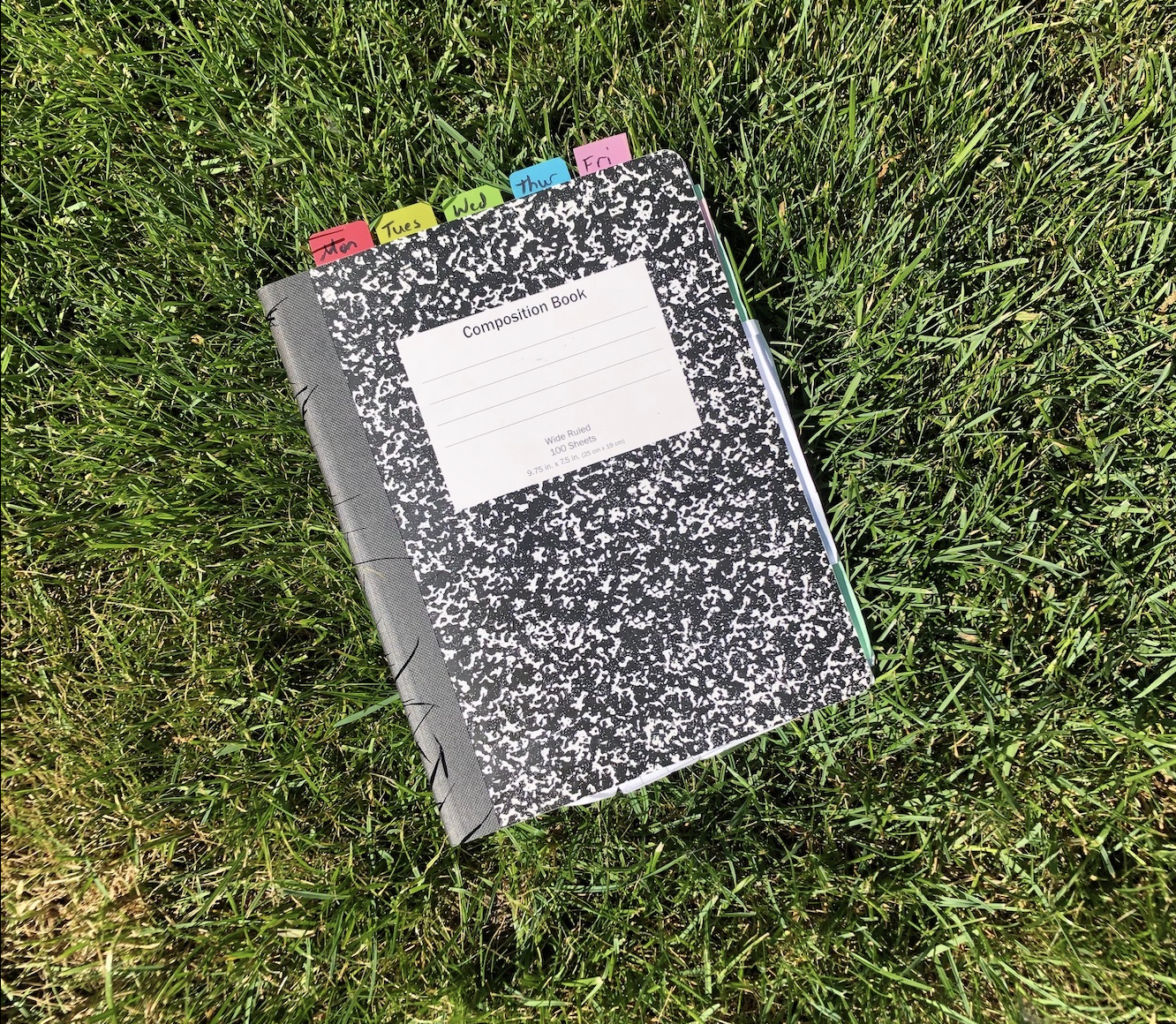
What does that look like?
- Students observe a particular animal for an hour a day, every day, recording observations in their journals (most usingstandard black-and-white composition books). This might include describing in detail their animal’s appearance – in words and sketches, discerning the adaptations that facilitate the aquatic life of a river otter or a penguin, or comparing the family dynamics of a mandrill family to our own.
- Students and parents engage in deep conversation over animal skulls and pelts, and how these characteristics help theseanimals survive in the wild.
- Students learn with zoo experts about the zoo’s work to help endangered animals, make enrichment for the animals and
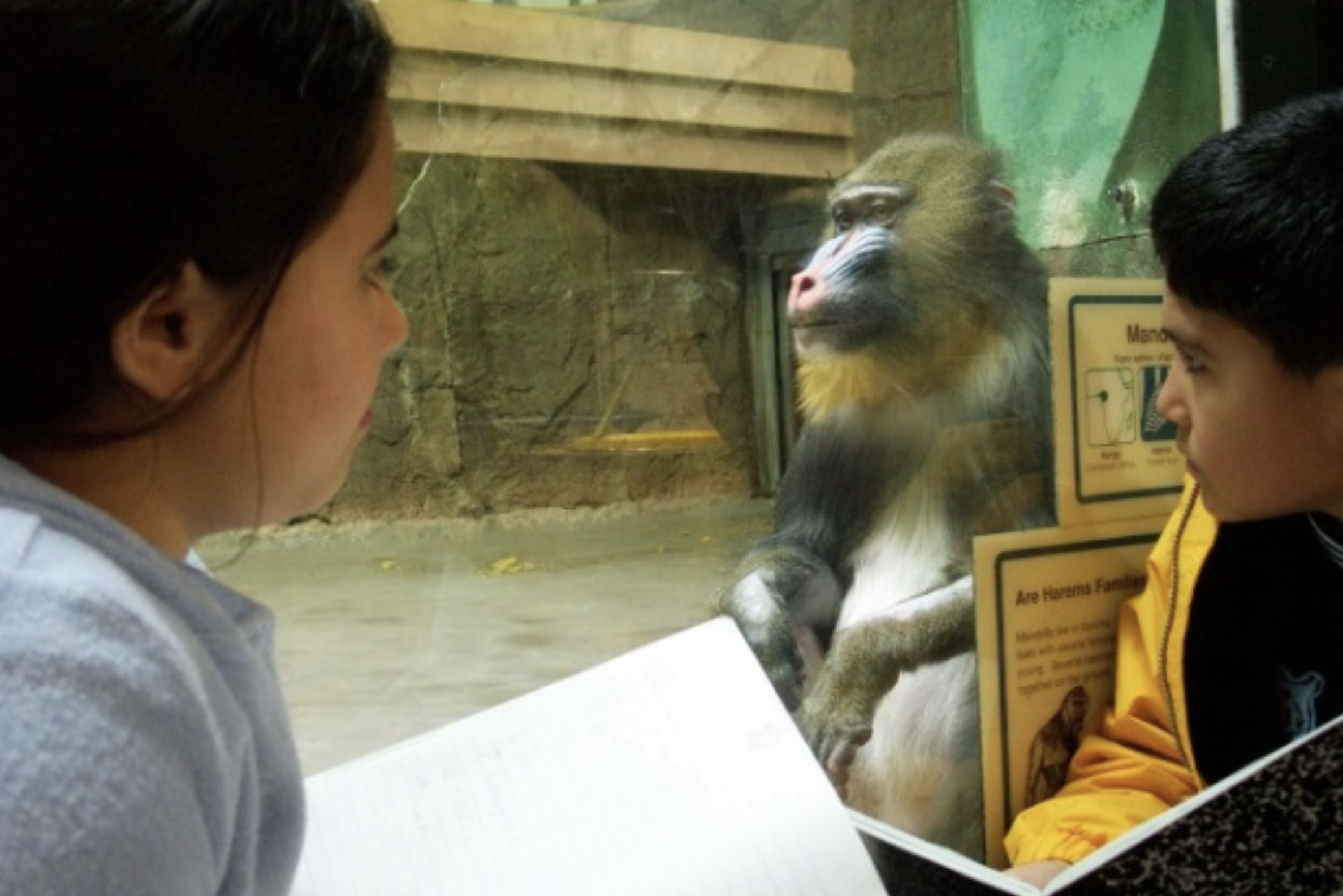 observe the reactions, speak with zookeepers and volunteer educators, and visit behind-the-scenes areas.
observe the reactions, speak with zookeepers and volunteer educators, and visit behind-the-scenes areas. - Students become the docents as they don our adult-sized docent vests and teach their classmates and parents what they havelearned about their observation animals.
Culminating projects after the visit include research reports, exhibit dioramas, animal diaries, poems, presentations to families and fellow students, and stewardship projects. It is always impressive to see the students’ work, their continued excitement, and the clear impact of their week at the zoo.
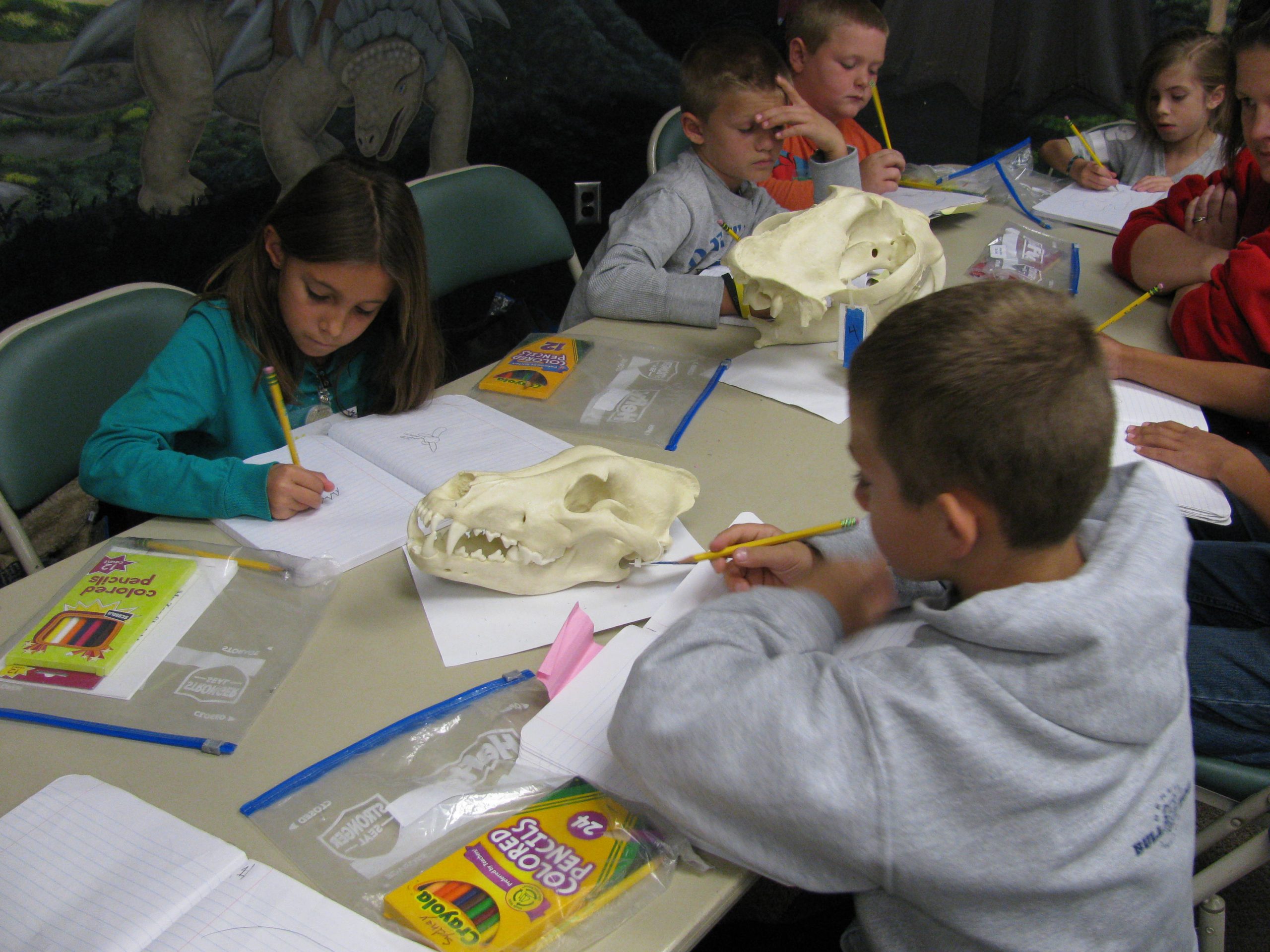
In 2012 the BIG Zoo Lesson was awarded top honors for education by the Association of Zoos and Aquariums. Many participants have also praised the program over the years.
- Carolina G, a student: “Thank you for … the best week of my life!”
- A third grader: “When I observed my animal (the otter), I had this funny feeling like I was with my best friend. I wanted to jump right into its habitat, but I knew I could not. So I just sat there and watched and drew. It was my favorite part of zoo school!”
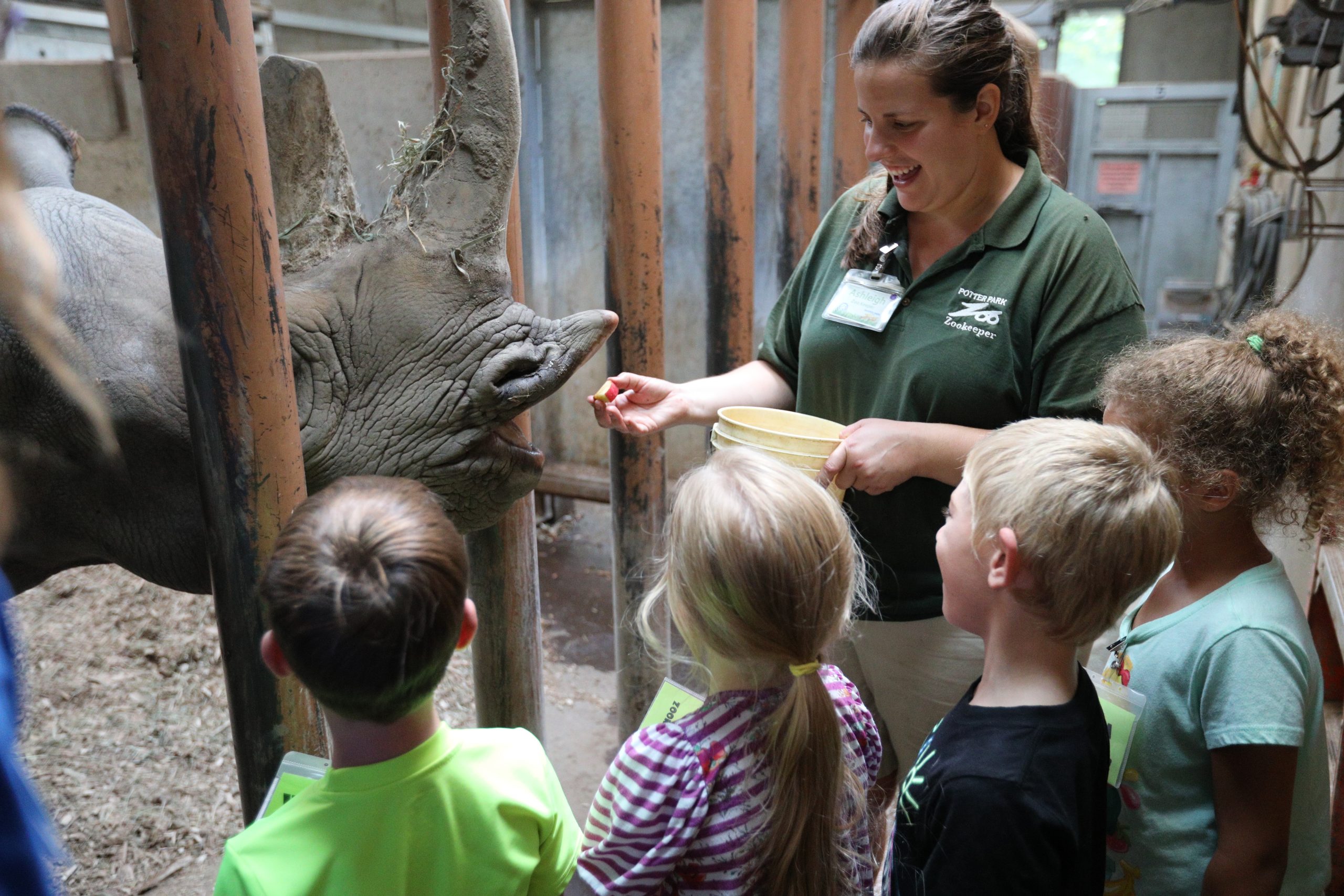 Casey B, third grade teacher: “The BIG Zoo Lesson is the perfect fit for the way I teach; you’ve made it possible for me to learn and grow as a teacher through this experience.”
Casey B, third grade teacher: “The BIG Zoo Lesson is the perfect fit for the way I teach; you’ve made it possible for me to learn and grow as a teacher through this experience.” - Brad J, fourth grade teacher: “This absolutely is one of the most influential learning experiences that my students are able to have.”
- Mary D, parent: “The innovative teaching and the dramatic impact on the children inspired me to become a teacher. I returned to (college) for another degree and now happily teach fifth graders in Marshall.”
About 23,000 students (plus the accompanying teachers and parents) have experienced the BIG Zoo Lesson at Potter Park Zoo. If you are one of these people, please add your story: What animal did you observe, what are your fondest memories, and what did it mean to you? Please include the teacher and school you came with and the approximate year that applies to your story.

To share your story, go to “Contact” on this website and leave a message in the drop-down menu to “What is your message regarding?” – “Story Submissions for Zoo Centennial.”



